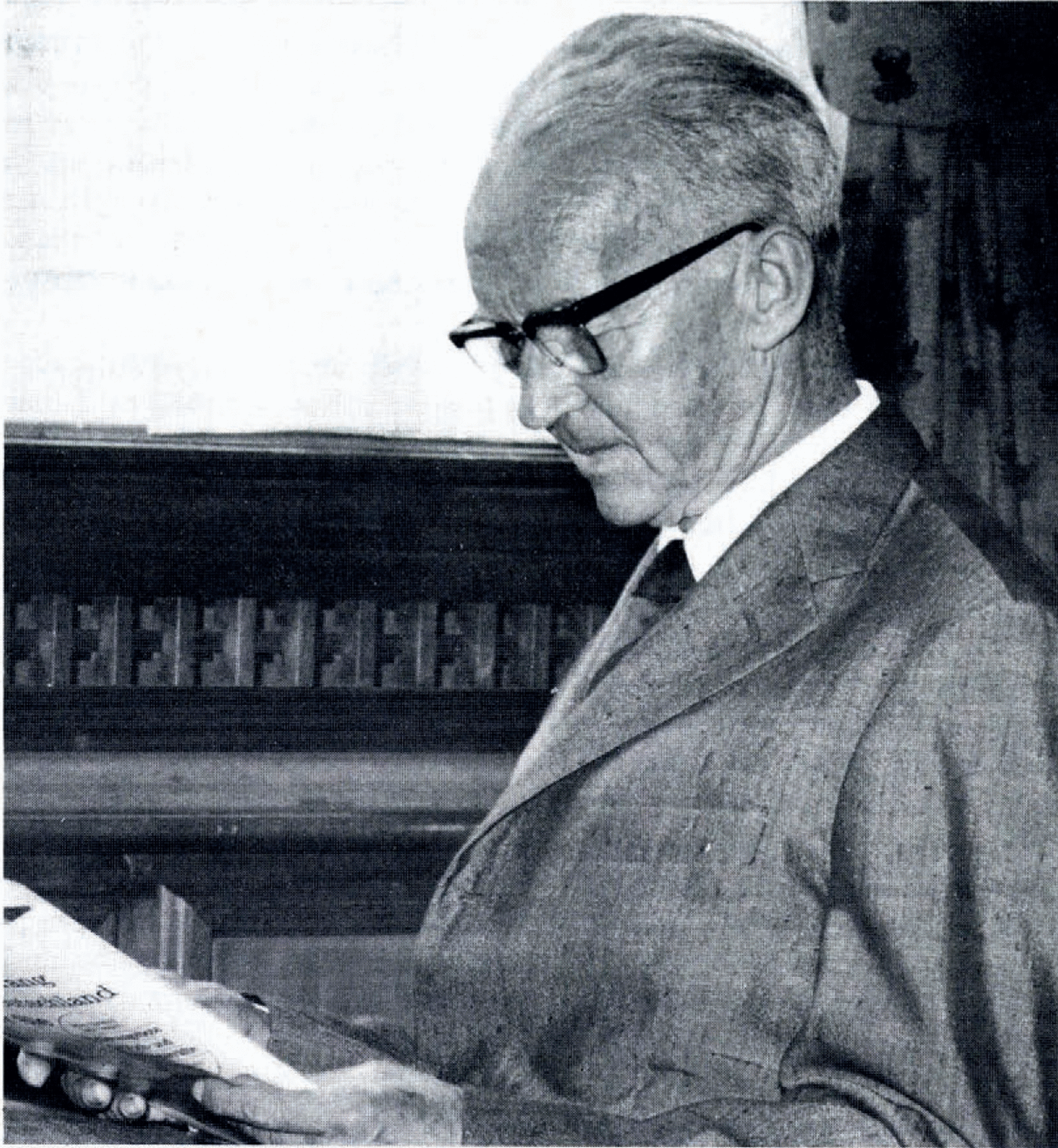
Robert Haefelt —1899–1978
Professor Dr Robert Haefeli, who died in Zürich in April 1978 in his eightieth year, was an engineer, scientist, mountaineer, and artist in one person. The synthesis of these independent modes of thinking and acting, combined with a great power of intuition and enterprise, resulted in important contributions to his favourite science, glaciology, and triggered worldwide developments.
As a civil engineer specializing in soil mechanics, in 1934 Haefeli introduced snow samples into his soil testing laboratory to investigate their deformation and strength properties. With these tests he opened the field of snow mechanics. On his ski-ing tours to untouched areas of the Alps as one of the Swiss ski-ing pioneers, he was frequently confronted with the phenomenon of avalanches, and the stability of the snow cover became to him, beyond personal safety, a subject of scientific interest.
In 1935 when Haefeli was appointed by the Eidg. Technische Hochschule in Zürich to build up a soil mechanics section in the Versuchsanstalt für Wasser- und Erdbau, he was at the same time entrusted with basic studies on snow and avalanches stimulated by the newly founded Schweizerische Schnee- und Lawinenforschungskommission. Therefore he spent the winter in Davos and on the Weissfluhjoch as the leader of a multidisciplinary team of young scientists among whom names like Henri Bader, Christian Thams, and Edwin Bucher were listed. Bursting with ideas, this group gathered within a few years fascinating results in the new field and published them in the classic “Der Schnee und seine Metamorphose” (1939). This volume contains Haefeli’s fundamental thesis “Schneemechanik mit Hinweisen auf die Erdbaumechanik”. Snow was treated as a viscous body with specific creep and strength properties. A number of tools, items of apparatus, and techniques still in use for measuring snow properties originated in this period. Hacfeli’s personal contributions were, among others, the ram penetrometer (rammsonde) and the rotational tensile-strength meter. Among the important findings, the creep behaviour of the snow cover (triangular creep profile) and methods for calculating snow pressure and in particular the principal stresses should be mentioned.
When the Second World War broke out, the activity on the Weissfluhjoch was reduced at first, but Haefeli had already launched the project for a permanent Federal Research Institute, and, despite all the adverse conditions, this was built in 1942–43 and it can still be considered a memorial of Haefeli’s pioneering work.
Although snow mechanics remained Haefeli’s favourite occupation he preferred to stay in Zürich and to follow an academic career in engineering science. However his habilitation thesis was again devoted to snow mechanics, and he became Professor of soil and snow mechanics. As such he was permanently linked with the work on Weissfluhjoch and took part in the development of technical avalanche protection. It should also be mentioned that important contributions have been made by Haefeli in the field of soil mechanics. Here only the glaciological aspects of his work arc noted.
In addition to snow and avalanches, Haefeli devoted his interest to glaciers. As a member and as president (1949–73) of the Gletscherkommission of the Schweizerischer Naturforschenden Gesellschaft, he followed a traditional line originating in the nineteenth century. His personal objects of research were among others the ice saddle on the Jungfraujoch, the Steingletscher, and their deformation. He studied the cold ice cap of the Jungfraujoch primarily as a small model for the Greenland ice sheet, a phenomenon which had fascinated Haefeli from his youth.
The problem of the movement and the balance of the inland ice of Greenland gave him no rest and he started in about 1955 a campaign for gathering an international group of scientists and specialists in logistics with the aim of organizing an international glaciological Greenland expedition (Expédition Glaciologique Internationale au Groenland). Thanks to his enthusiasm, his affability, and also his tenacity he brought together participants from Denmark, Austria, France, Germany, and Switzerland with their relevant national organizations. In 1959 E.G.I.G. took off, led by Paul-Émile Victor and his experienced organization Expéditions Polaires Françaises. This was one of the first scientific common enterprises of countries which had fought each other not long before.
But two years before E.G.I.G. set out, Haefeli was attacked by an insidious disease. He had to resign from his profession and could not participate in the field work of the expedition. Nevertheless, in a phase of relative recovery he managed to get on board a research vessel, to proceed to the Kangerdlugsuaq glacier, and to set his foot on the “Indlandsis”. Nine years later, when the final campaigns of E.G.I.G. were organized, Haefeli again participated in the formulation of the programme. He suggested erecting towers of 20 m height every 50 m across the west-east traverse of central Greenland, so that the accumulation could be observed for several decades. These towers named “Haefeli towers” are still there and visible. The rheology of the Greenland ice sheet engaged Haefeli’s thinking up to his death and an extensive report on this subject will be available.
Studying Haefeli’s work, one recognizes a balanced synthesis of observation and theory cast in a highly elaborated form. Since most of his papers were published in German, they were not easily accessible everywhere. The artistic aspect of nature and its spiritual background were as important to him as its physical structure, and this attitude appears in his many fine drawings and paintings.
Robert Haefeli served on various international bodies. From 1954 to 1957 he was President of the International Commission on Snow and Ice. In 1975 he was awarded the Alfred Wegener medal by the Deutsche Gesellschaft für Polarforschung and in 1968 he became an Honorary Member of the Glaciological Society.


